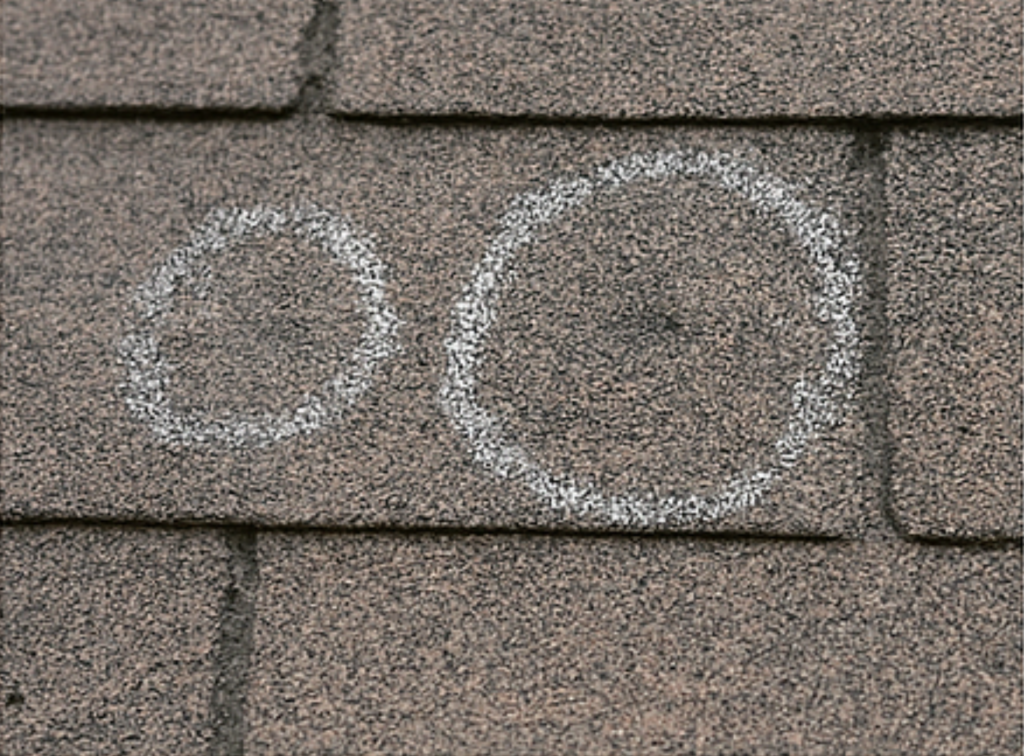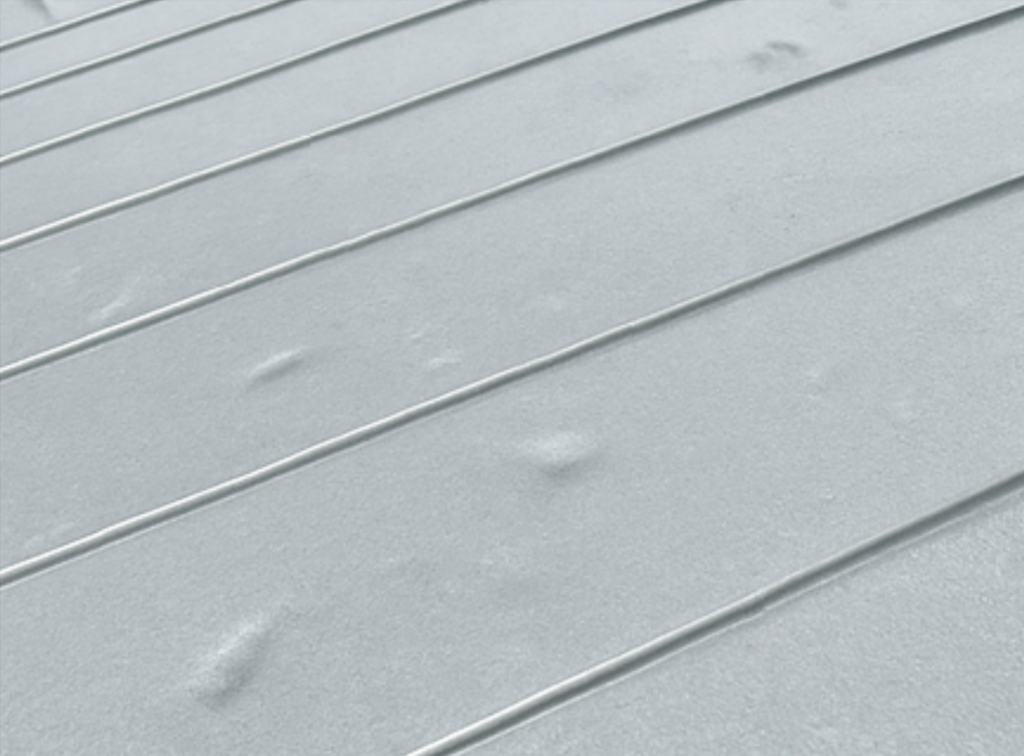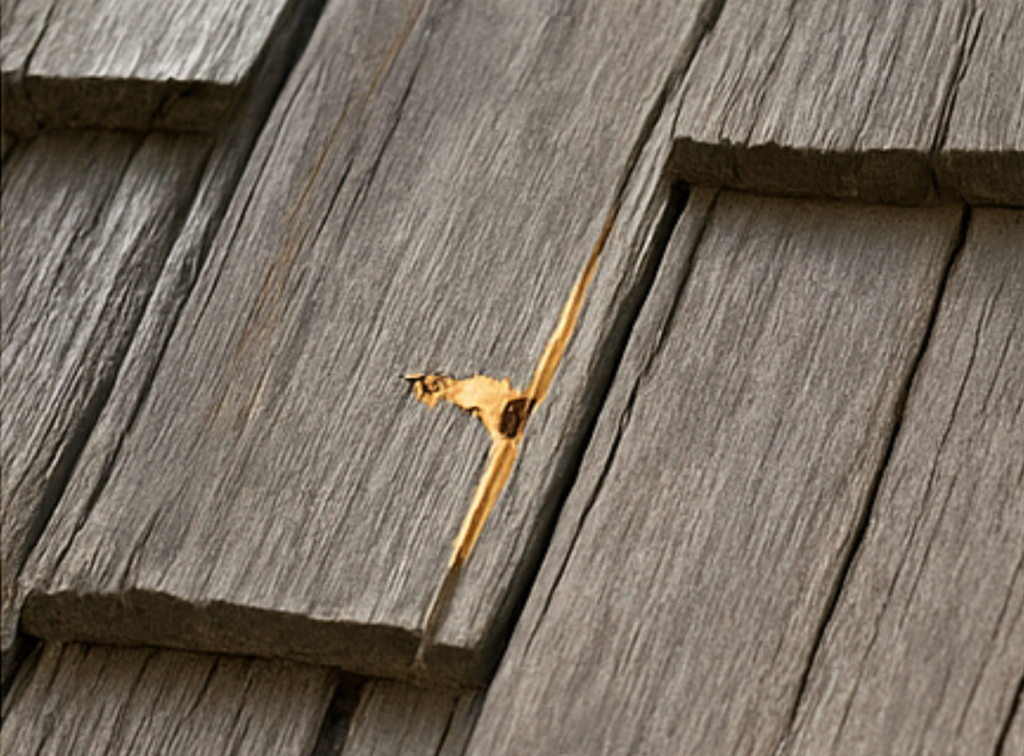In Austin, TX, weather can be unpredictable—especially during storm season when hail is common. While hailstorms may seem short-lived, they can leave behind roof damage that isn’t always obvious. If left unaddressed, these issues can turn into leaks, structural problems, and costly repairs.
That’s why scheduling a professional roof inspection in Austin, TX after a major storm is so important. An expert evaluation can uncover hidden damage and help extend the lifespan of your roof. At Capital City Roofing, we’ve seen firsthand how hail can compromise even the toughest roofs, which is why we emphasize proactive inspections and timely repairs.
Hail may look harmless when it bounces off your yard or driveway, but those same chunks of ice can wreak havoc on your roofing system. The severity depends on hail size, wind speed, and roof age. Here’s how hail typically affects roofs:
Asphalt shingles are coated with protective granules that shield against UV rays and weathering. Hail impact knocks these granules loose, exposing the asphalt underneath. Without that layer, shingles become brittle and deteriorate faster, accelerating roof aging.
Hailstones strike shingles with enough force to leave soft spots or visible dents. These bruised areas weaken the shingle structure, even if cracks aren’t obvious at first. Over time, the weakened spots can split, curl, or blow off during future storms.
Underneath asphalt shingles is a fiberglass mat that provides structure. Severe hail impact can fracture this mat, leaving shingles vulnerable to tearing and water infiltration.
Shingles rely on adhesive strips to stay sealed against wind and rain. Hail can break or loosen these seals, making it easier for shingles to lift or blow away in high winds.
Once shingles lose their protective ability, water can seep into your attic and walls. This may cause rot, mold growth, stained ceilings, and even electrical hazards.
Hail damage doesn’t always show immediate leaks. Often, the effects compound over months or years until costly repairs are unavoidable. That’s why professional inspections are crucial after major storms.
Circular granule loss and soft bruising (marked with chalk) on asphalt shingles – classic hail impact signs.


Dents on a standing-seam metal roof from hail-cosmetic damage only, but still affecting protective coatings.
Chipped and cracked concrete tiles from recent hail-microfractures are invisible from the ground


Splits and punctures in cedar shakes – fresh, bright wood indicates hail impact rather than age-related wear.
Has a recent hailstorm left you wondering if your roof was damaged? Knowing what to look for—and what to do next—can save you thousands in repairs and ensure your insurance claim gets approved. In this guide, you’ll learn how to spot hail damage on different roof types, tell the difference between hail damage and normal wear, and what to do in the first 24 hours after a storm.
If you’re unsure where to start, reaching out to experienced hail damage roofing contractors in Austin can make all the difference. These professionals can assess the extent of the damage, help you document it for insurance purposes, and recommend the best course of action to protect your home.
Wondering if your roof has taken a hit after a storm? Hail damage varies depending on your roofing material. Below is a practical guide to help you recognize common signs of impact. For a more detailed evaluation process, don’t miss our Roof Damage Inspection Checklist.
The most common roofing type in the U.S., asphalt shingles are made of a fiberglass mat coated with asphalt and mineral granules. Hailstones—especially those over 1 inch in diameter—can crush or bruise the mat beneath, even if surface damage looks minor.
What to Look For:
Metal roofs are known for durability, but they’re not immune to hail—especially soft metals like aluminum or thinner gauge steel. Dents can compromise aesthetics and protective coatings.
What to Look For:
Tile roofs are resilient but brittle. Large hailstones—typically 2 inches or more—can crack, chip, or dislodge tiles. Damage is often subtle but can lead to leaks if ignored.
What to Look For:
Natural wood shakes have a beautiful, rustic appearance—but hail impacts can split the grain, compromising both aesthetics and performance. This type of damage can also increase fire risk in dry climates.
What to Look For:
Aging and hail damage often look similar—but insurers won’t cover general wear and tear. Here’s how to tell the difference:
| Feature | Hail Damage | Normal Wear |
|---|---|---|
| Granule Loss | In circular patterns or bruises | Even thinning over time |
| Cracks | Random and sharp-edged | Parallel, linear (from sun/traffic) |
| Soft Spots | Present (feels like a bruise) | Rare |
| Shingle Corners | Cracked from impact | Curled from UV exposure |
Many homeowners are surprised to learn that even small hail can cause real damage. Here’s a detailed table showing how different hail sizes can affect your roof:
| Hail Size | Potential Roof Damage | Commonly Affected Materials | Example Region & Event |
|---|---|---|---|
| Pea (< 0.5") | Minor, mostly cosmetic | Metal, plastic vents | Light Texas spring storms |
| Marble (0.75") | Small bruising, minor granule loss | Asphalt shingles | Midwestern May storms |
| Quarter (1") | Moderate shingle bruising, cracks in tiles | Asphalt, clay, concrete | Colorado Front Range storms |
| Golf Ball (1.75") | Significant shingle loss, dented metals, broken tiles | All roof types | Dallas-Fort Worth hailstorm |
| Baseball (2.5"+) | Severe structural damage, possible roof failure | All materials, especially tile | Denver Superstorm 2023 |
After a hailstorm, it’s tempting to grab a ladder and check your roof yourself. While we recommend leaving detailed inspections to professionals for safety reasons, there are some exterior clues you can look for:
If you notice any of these issues, call for a professional roof inspection in Austin, TX. Trained experts, like the team at Capital City Roofing, know how to safely examine shingles, flashing, vents, and other components to catch hidden problems that homeowners often miss.
Austin is no stranger to hailstorms. Central Texas experiences frequent severe weather, and even a short storm can leave lasting effects on your home. Some reasons why regular roof inspections matter include:
In short, routine inspections are an investment in both your home’s safety and your wallet.
At Capital City Roofing, we understand the unique challenges Austin homeowners face. Our team specializes in storm-related roof inspections and repairs designed to keep your home safe year-round. Here’s what sets us apart:
By choosing Capital City Roofing, you’re working with a local company that treats your home as if it were our own.
Yes. Even hail smaller than an inch can dislodge granules, bruise shingles, and shorten roof life.
As soon as it’s safe. Prompt inspections help you file timely insurance claims and prevent worsening damage.
It’s best to avoid climbing on your roof. Many forms of hail damage are subtle and require trained eyes and safe techniques to detect.
We recommend at least once a year, plus immediately after major storms or hail events.
Most homeowner policies include hail damage coverage, but approval depends on timely documentation and inspection.
Still have questions? Contact Capital City Roofing for a free inspection and expert guidance on hail damage repair and insurance claims. We’re here to help.
Hailstorms are a reality for Austin homeowners, but their aftermath doesn’t have to be a mystery. By understanding what hail does to a roof and knowing the signs of damage, you can take proactive steps to protect your investment.
A professional roof inspection in Austin, TX from Capital City Roofing ensures your home is safe, damage is documented, and repairs are handled with care. Don’t wait for leaks to appear—schedule your inspection today and gain peace of mind before the next storm arrives.
This article is for informational purposes and does not constitute professional roofing advice. Please consult a licensed contractor, like Capital City Roofing, for personalized recommendations and project guidance.
Phone: (512) 844 – 9598
© 2024. Capital City Roofing